Historical Background
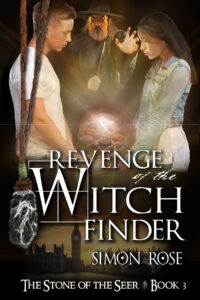 The story, main characters, and some of the settings in Revenge of the Witchfinder are fictional but are based on true events and the story features real historical characters, such as King Charles I. The English Civil War was a series of conflicts in England, Scotland, and Ireland in the 1640s and early 1650s. The war originated in the struggle between Charles I and Parliament regarding how the country should be governed.
The story, main characters, and some of the settings in Revenge of the Witchfinder are fictional but are based on true events and the story features real historical characters, such as King Charles I. The English Civil War was a series of conflicts in England, Scotland, and Ireland in the 1640s and early 1650s. The war originated in the struggle between Charles I and Parliament regarding how the country should be governed.
The king’s defeat in the civil war led to his trial and execution in January 1649. The monarchy was abolished and replaced first by the Commonwealth of England and then the Protectorate, before the monarchy was restored in 1660. However, the defeat of Charles I confirmed that an English monarch could not rule the country without the consent of Parliament, although this wasn’t legally established until the Glorious Revolution in 1688.
These are links to online sources where you can learn more about the historical events, settings, and leading characters from the English Civil War, some of the leading characters during the conflict, historical locations that are mentioned in the text, life in the seventeenth century, and details from other historical periods that are featured in the story.
Please note that all links to websites were fully operational at the time of the book’s publication.
The English Civil War
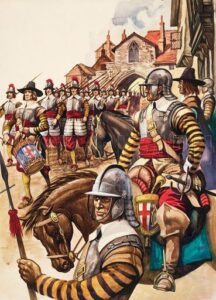 There is a great deal of material online about the English Civil War. These websites provide information on the background to the conflict, the political and religious ideas of the time, the opposing armies, and about the course of the war throughout the British Isles.
There is a great deal of material online about the English Civil War. These websites provide information on the background to the conflict, the political and religious ideas of the time, the opposing armies, and about the course of the war throughout the British Isles.
https://en.wikipedia.org/wiki/English_Civil_War
https://en.wikipedia.org/wiki/Roundhead
https://en.wikipedia.org/wiki/Cavalier
https://en.wikipedia.org/wiki/Timeline_of_the_English_Civil_War
https://kids.kiddle.co/English_Civil_War
https://www.history.com/topics/british-history/english-civil-wars
https://spartacus-educational.com/STUcivilwar.htm
http://bcw-project.org/church-and-state/first-civil-war/
http://bcw-project.org/timelines/the-english-civil-war
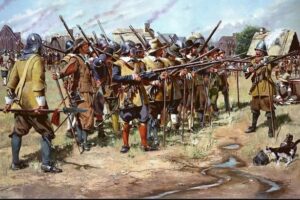
http://bcw-project.org/church-and-state/second-civil-war/
http://bcw-project.org/timelines/the-second-civil-war
This map shows the locations of some of the Civil War’s major battles.
https://olivercromwell.net/english-civil-war-battles/
These maps show territory held by the Royalists and that held by Parliament at different stages of the war.
Charles I (1600-1649)
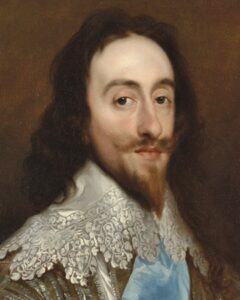 Charles I was King of England from 1625 to 1649. His disagreements with Parliament, which wanted to reduce his powers, led to the English Civil War. The king’s defeat resulted in his trial and execution in 1649.
Charles I was King of England from 1625 to 1649. His disagreements with Parliament, which wanted to reduce his powers, led to the English Civil War. The king’s defeat resulted in his trial and execution in 1649.
https://kids.kiddle.co/Charles_I_of_England
http://bcw-project.org/biography/charles-the-first
https://en.wikipedia.org/wiki/Charles_I_of_England
https://www.biography.com/royalty/charles-i
Oliver Cromwell (1599-1658)
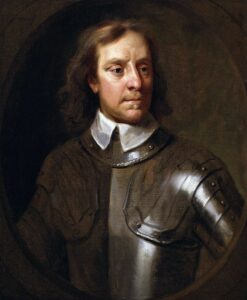 Oliver Cromwell was one of the main leaders of the Parliamentary forces in the civil war against Charles I. After the king’s execution, Cromwell ruled the country as the Lord Protector of the Commonwealth of England, Scotland, and Ireland.
Oliver Cromwell was one of the main leaders of the Parliamentary forces in the civil war against Charles I. After the king’s execution, Cromwell ruled the country as the Lord Protector of the Commonwealth of England, Scotland, and Ireland.
https://kids.kiddle.co/Oliver_Cromwell
http://bcw-project.org/biography/oliver-cromwell
https://en.wikipedia.org/wiki/Oliver_Cromwell
https://www.history.com/topics/british-history/oliver-cromwell
Henrietta Maria (1609-1669)
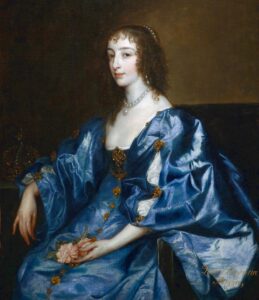
Henrietta Maria was the wife of Charles I and Queen of England from 1625 to 1649. As a Roman Catholic, she was unpopular in England and was forced to leave the country during the civil war. She returned to England after the Restoration in 1660, when her son became King Charles II.
https://en.wikipedia.org/wiki/Henrietta_Maria
https://kids.kiddle.co/Henrietta_Maria_of_France
http://bcw-project.org/biography/henrietta-maria
Religion in the seventeenth century
These websites have information about the religious situation in England at the time of the civil war. This includes details on secret Catholic places of worship, similar to the underground workshop located at Habingdon House.
https://www.historic-uk.com/HistoryUK/HistoryofEngland/Priests-Holes/
https://www.atlasobscura.com/articles/the-secret-rooms-that-were-custom-built-to-hide-your-priest
https://www.nationaltrust.org.uk/lists/priest-holes
Medieval monasteries
These links have excellent information on medieval monasteries and the scriptoriums where illuminated manuscripts were created.
https://en.wikipedia.org/wiki/Scriptorium
https://www.historytoday.com/secrets-scriptoria
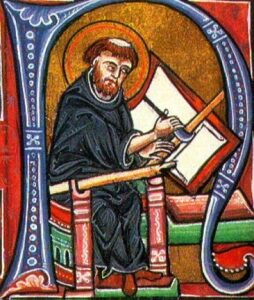
https://en.wikipedia.org/wiki/Monastery
https://www.ancient.eu/Medieval_Monastery/
https://en.wikipedia.org/wiki/Illuminated_manuscript
https://www.ancient.eu/Illuminated_Manuscripts/
https://www.ancient.eu/Book_of_Kells/
https://www.ancient.eu/article/1293/the-daily-life-of-medieval-monks/
https://en.wikipedia.org/wiki/Monk
https://www.ancient.eu/Medieval_Church/
The Vikings
The Vikings were people from Scandinavia in Northern Europe and the Viking Age was from around 700 to 1000 AD. During that time, the Vikings attacked countries on the coasts of Europe and often raided the British Isles, where the Vikings also settled and founded their own kingdoms.
https://en.wikipedia.org/wiki/Vikings
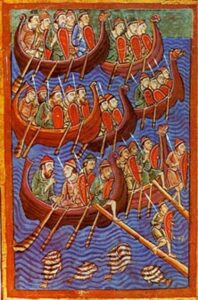
https://www.history.com/topics/exploration/vikings-history
https://www.ancient.eu/Vikings/
https://en.wikipedia.org/wiki/Great_Heathen_Army
https://www.historic-uk.com/HistoryUK/HistoryofEngland/Great-Heathen-Army/
https://kids.kiddle.co/Great_Heathen_Army
This map shows the path of the Great Heathen Army of Vikings that attacked England in 865.
https://en.wikipedia.org/wiki/Great_Heathen_Army#/media/File:England_Great_Army_map.svg
This map shows the areas controlled by the Vikings and Anglo-Saxons in the British Isles in 886.
Leonardo da Vinci (1452-1519)
Leonardo da Vinci was a painter, architect, and inventor during the Renaissance in the late fifteen and early sixteenth centuries. He is known for his famous paintings but also worked on a number of inventions, including flying machines, and studied the workings of the human body.
https://en.wikipedia.org/wiki/Leonardo_da_Vinci
https://www.history.com/topics/renaissance/leonardo-da-vinci
https://www.leonardodavinci.net/
Habingdon, Essex, and London
The fictional Habingdon House and the nearby village are located in the county of Essex in Southeast England. This map of England’s counties shows the location of Essex in relation to London.
http://myenglandtravel.com/images/all_england_counties_map.gif
Archaeological excavations
These websites have information about archaeological excavations, similar to those being conducted at Habingdon House.
https://en.wikipedia.org/wiki/Archaeological_excavation
https://kids.kiddle.co/Archaeology
The Palace of Whitehall
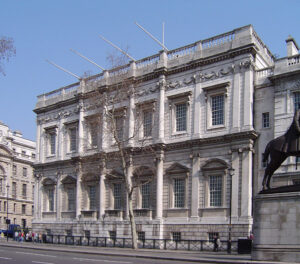
The Palace of Whitehall in London was the main home of the English monarchs, including Charles I, from 1530 until 1698, when the palace was destroyed by fire.
https://en.wikipedia.org/wiki/Palace_of_Whitehall
http://www.everycastle.com/Whitehall-Palace.html
https://kids.kiddle.co/Palace_of_Whitehall
The Banqueting House
The Banqueting House was the only part of the Palace of Whitehall that survived the fire of 1698. Charles I was executed in front of the Banqueting House in January 1649.
https://en.wikipedia.org/wiki/Banqueting_House,_Whitehall
https://www.hrp.org.uk/banqueting-house/history-and-stories/the-story-of-banqueting-house/
https://www.britainexpress.com/London/Banqueting_House.htm
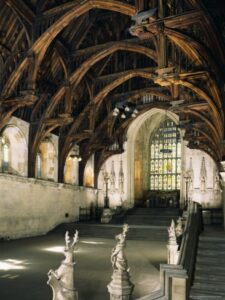 Westminster Hall
Westminster Hall
Westminster Hall in London is the oldest part of the Palace of Westminster. The hall was built in 1097 and has been used for a variety or purposes over the centuries, including the trial of Charles I in 1649.
https://en.wikipedia.org/wiki/Palace_of_Westminster#Westminster_Hall
https://www.parliament.uk/about/living-heritage/building/palace/westminsterhall/
https://lostcityoflondon.co.uk/tag/westminster-hall/
Great Fire of London
The Great Fire of London destroyed large parts of the city in early September 1666. Much of London was rebuilt after the fire and some areas of the city appeared different to how they had looked at the time of the civil war.
https://en.wikipedia.org/wiki/Great_Fire_of_London
https://www.historic-uk.com/HistoryUK/HistoryofEngland/The-Great-Fire-of-London/
https://www.london-fire.gov.uk/museum/history-and-stories/the-great-fire-of-london/
The Blitz
The Blitz was the name given to the German aerial bombing campaign against Great Britain during World War II. It caused great damage to parts of London and other British towns and cities.
https://en.wikipedia.org/wiki/The_Blitz
https://www.historic-uk.com/HistoryUK/HistoryofBritain/The-Blitz/



